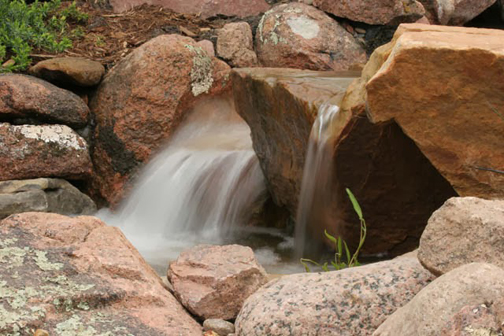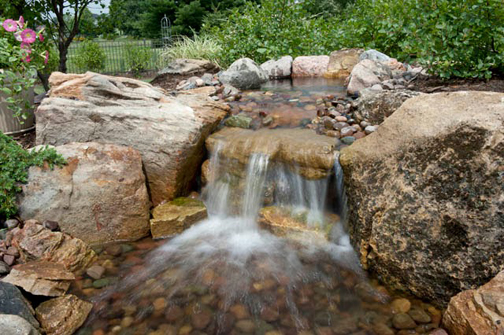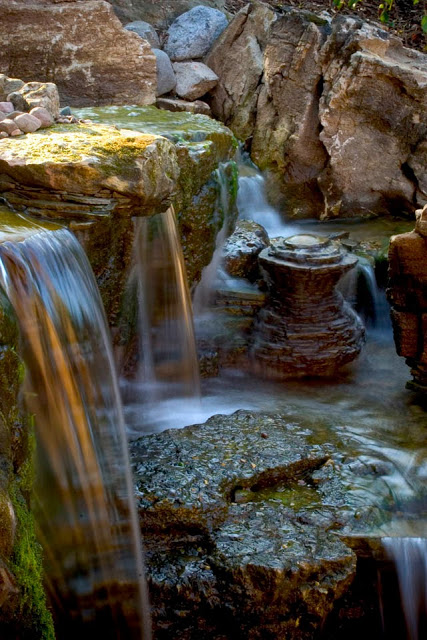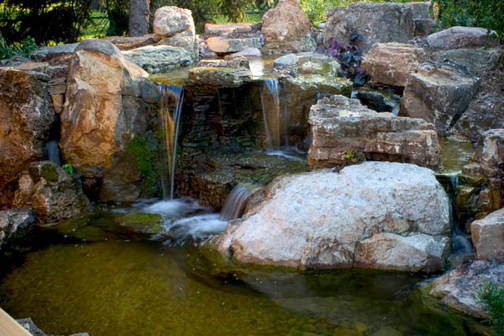Not only do waterfalls provide melodious tunes for the garden, but they provide necessary aeration to keep your ecosystem pond functioning and looking its best. With the use of easy-to-install kits, you have the option of creating a pond and waterfall, or a standalone waterfall (no pond). Regardless of which option you choose, waterfalls add beautiful sound in your outdoor living space.
To create a natural-looking waterfall, Aquascape is sharing their favorite tips to help you achieve the waterfall (and yard) of your dreams!
If the terrain of your backyard is flat, keep your new waterfall in scale with the surrounding landscape and terrain by building a berm around the waterfall area. Several smaller drops of 4 to 9 inches or one drop – no more than 18 inches – will help blend your pond and waterfall seamlessly into your landscape.
The drop of the waterfall is the distance from where the water exits the Waterfall Spillway to where it hits the pond. Some of the main rocks should be several inches larger than the drop of the waterfall. For example, a drop of 12 inches should use rocks that are 16 inches in diameter in order for them to be in scale with the project.
Your waterfall will look more natural if you “frame” it with the largest of the rocks that you have chosen. Then, locate a rock with a flat surface and place it between the frame rocks. As the water falls, it will hit the larger stones and find its path through the spaces between them – just like in nature. Small rocks and gravel can then be used to fill in gaps. Remaining rocks can be set along the edge of the basin and gaps can be filled using smaller rocks or gravel. The waterfall will be the focal point of the water feature, so take your time and be creative.
Fewer rocks are better when building a waterfall. Three large stones are better than 12 small stones stacked up. Nature will provide you with some tips for designing and building your waterfall. You usually will see one very large stone, surrounded by few smaller ones, with the water running between them.
If you’re creating a longer waterfall, be sure to twist and turn the waterfall and stream so that there are new views and facets with every turn, which looks better visually. Take your time on this part – designing twists and turns can be the best part of building the waterfall.
For maximum enjoyment throughout the day, make sure your waterfall is visible from a regularly used window or patio door – wherever your family gathers most – in order to provide you views of cascading water from both inside and outside of your home.
The more plant material you can line the falls and stream with, the better. It will soften the hard edges of all the stone. Also, if you create a good, planted backdrop to your berm it will look as though it’s always been there. Make sure it flows into the rest of your yard.
Be sure to study natural streams and waterfalls to find ideas and inspiration. That is where the greatest waterfall builders in the world gain their inspiration!







